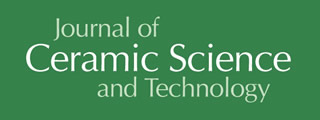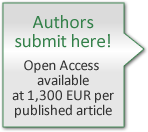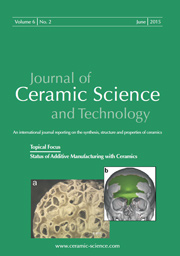Articles
All articles | Recent articles
Fine Grinding of Bioceramics for Knee Implants with Elastically Bonded Abrasives: Process Modeling and Validation
A. Müller, B. Denkena
Institute of Production Engineering and Machine Tools, Leibniz Universität Hannover, An der Universität 2, D-30823 Garbsen, Germany
received June 27, 2014, received in revised form August 1, 2014, accepted September 23, 2014
Vol. 6, No. 1, Pages 31-40 DOI: 10.4416/JCST2014-00024
Abstract
In recent years, there has been steady growth in the application of complex-shaped joint replacement implants and wear-resistant ceramics as implant material. The challenge of implant production remains finishing to an average surface roughness of 20 nm. Tools with elastically bonded diamonds combine grinding and loose abrasive polishing to achieve a high finish with low material removal and thus high shape accuracy – a so-called fine grinding process. This work addresses the working principle of elastic diamond tools in the fine grinding process and the influence of process parameters on the roughness of bioceramics for knee implants. A physical-empirical roughness model based on the number of cutting grains and grain forces was developed and verified as part of the study. The results confirm the hypothesis that the increase of the single-grain force results in the reduction of the surface peaks while taking into account the bond characteristics. For automated use as machine tools for the finishing of all-ceramic implants, continuous wear detection and compensation, by e.g. force controlled polishing, and the temperature stability of the bonds have to be developed.
![]() Download Full Article (PDF)
Download Full Article (PDF)
Keywords
Biomedical ceramics, processing by polishing and fine grinding, elastic tool, surface topography, knee implant
References
1 Ahn, J.H., Lee, M.C., Jeong, H.D., Kim, S.R., Cho, K.K.: Intelligently automated polishing for high quality surface formation of sculptured die, J. Mat. Proc. Techn., 130 – 131, 339 – 344, (2002).
2 Jain, V.K.: Abrasive-based nano-finishing Techniques: an overview, Mach. Sci. and Techn., 12, 257 – 294, (2008).
3 Lenk, R.: State of the art in ceramic manufacturing. In: ceramic in orthopaedics – bioceramics and alternative bearings in joint arthroplasty, 10th Biolox Symposium. Washington D.C., USA, June 10 – 11, 175 – 179, 2005.
4 Weiner, M.: Long-life implants, (in German), Fraunhofer-Magazin, 3, 46 – 47, (2007).
5 Niemczewska-Wójcik, M.: The influence of the surface geometric structure on the functionality of implants, Wear, 271, 596 – 603, (2011).
6 Blunt, L., Jiang, X.Q.: Three dimensional measurement of the surface topography of ceramic and metallic orthopaedic joint prostheses, J. Mat. Sci.: Mater. M., 11, 235 – 246, (2011).
7 Heintze, S.D., Forjanic, M., Rousson, V.: Surface roughness and gloss of dental materials as a function of force and polishing time in vitro, Dent. Mat., 22, 146 – 165, (2006).
8 Porat, R., Yarnitsky, Y.: Polishing diamond mechanisms, the parameter influence of the polishing rate, society of manufacturing engineers, MR91 – 192, 12 – 1 – 12 – 18, (1991).
9 Brecher, C., Tuecks, R., Zunke, R., Wenzel, C.: Development of a force controlled orbital polishing head for free form surface finishing, Prod. Eng. and Develop., 4, 269 – 277, (2010).
10 Brinksmeier, E.; Heinzel, C.; Bleil, N.: Superfinishing and grind-strengthening with elastic bonding system, J. Mat. Proc. Techn., 209, 6117 – 6123; (2009).
11 Evans, C.J., Paul, E., Dornfeld, D., Lucca, D.A., Byrne, G., Tricard, M., Klocke, F., Dambon, O., Mullany, B.A.: Material removal mechanisms in lapping and polishing, CIRP An. of Manuf. Techn., 52, 611 – 634, (2003).
12 Westkämper, E., Hoffmeister, H.-W.: Function-oriented lapping and polishing of ceramic rolling elements through characterization of the workpiece surface, CIRP An. of Manuf. Techn., 45, 529 – 532, (1996).
13 Brinksmeier, E., Mutlugünes, Y., Klocke, F., Aurich, A.C., Shore, P., Ohmori, H.: Ultra-precision grinding, CIRP An. of Manuf. Techn., 59, 652 – 671, (2010).
14 Karpuschewski, B., Pieper, H.-J., Welzel, F., Risse, K.: Alternative strategies in finishing cylinder running surfaces, CIRP An. of Manuf. Techn., 61, 559 – 562, (2012).
15 Smith, G.T.: Industrial metrology. Surfaces and roundness, 1st edition. Springer, Heidelberg, 2002.
16 Gessenharter, A.: Polishing structured mould inserts for optical components (in German), 1st edition. Shaker, Herzogenrath, 2006.
17 Wang, G., Wang, Y.: Research on polishing process of a special polishing machine tool, Mach. Sci. Techn., 13, 160 – 121, (2009).
18 Hoffmeister, H.-W., Hahmann, W.-C.: Superfinishing of bearing rings using elastic bonded grinding wheels. In: 26th Annual Meeting of the ASPE Proceedings, Denver, Colorado, USA, 2011.
19 Sooraj, V.S., Radhakrishnan, V.: Fine finishing of internal surfaces using elastic abrasives, J. Mach. Tools and Manuf., 78, 30 – 40, (2014).
20 Zum Gahr, K.-H.: Wear by hard particles, Trib. Intern., 31, 21 – 31, (1998).
21 Denkena, B., de Leon, L., Turger, A.: Roughness prediction for elastic polishing of complex ceramic workpieces. In: Proceedings of the 10th euspen International Conference, Delft, Netherland, 216 – 219, 2010.
22 Denkena, B., de Leon, L., van der Meer, M., Turger, A.: Flexible polishing with bounded grains for complex ceramic endoprostheses. In: Proceedings of the 24th ASPE Annual Meeting, Monterey, California, USA, 96 – 99, 2009.
23 Denkena, B., Köhler, J., Turger, A.: Modeling the polishing process with resilient diamond tools for manufacturing of complex shaped ceramic implants. In: ASPE Annual Meeting, Denver, Colorado, USA, 2011.
24 Luo, J.: Integrated modeling of chemical planarization for sub-micron IC fabrication. 1st edition, Springer Berlin Heidelberg, 2004.
25 Hahmann, W.-K.: Innovative approaches for finishing of functional surfaces, in German, 1st edition, Vulkan-Verlag, 2013.
26 Kunz, J., Studer, M.: Determination of the compression-modulus of elasticity based shore A-hardness, (in German), Kunststoffe, 6, 92 – 94, (2006).
27 Sponagel, S., Unger, J., Spies, K.H.: Hardness in connection with cross-linking, strain to rupture and fatigue resistance of an elastomer, (in German), KGK Kautschuk Gummi Kunststoffe, 56, 608 – 612, (2003).
28 Marinescu, I.D., Hitchiner, M., Uhlmann, E., Rowe, W.B., Inasaki, I.: Handbook of machining with grinding wheels, 1st edition, CRC Press by Taylor & Francis Group, LLC, 2007.
29 Kramer, N., Wangenheim, C.: Model based characterization of the grinding wheel effective topography, In: Advances in abrasive technology XI, 11th International Symposium on Advances in Abrasive Technology, Japan, 258 – 263, 2008.
30 Girkmann, K.: Flächentragwerke. Introduction to the elastostatics of disks, plates, bowls and folded plates, (in German), Springer, Wien, New York, 1978.
31 Müller, A.: Polishing ceramic knee implants with flexible diamond tools, (in German), Berichte aus dem IFW, 4/2014, Denkena, B. (Editor), PZH-Verlag, Garbsen, 2014.
Copyright
Göller Verlag GmbH


